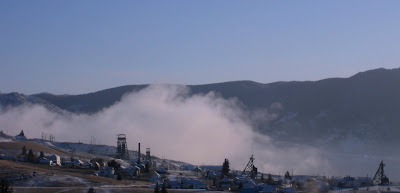Calendars, of course, are social constructions--more or less arbitrary things for imposing the human animal's rational concept of time on the natural world. Very useful for business, religious, and administrative purposes, of course. Our Gregorian calendar is a bastard thing, roughly based on the solar year with 12 Babylonian months of approximate moon-cycle length. (If the world were created by a Babylonian mathematician, the 12 months X 30 days = 360 days would give the perfect 360 degree circle of a year's time.)
But moon phases cycle over about a 29&1/2 day period, whereas our months are from 28 to 31 days long and years from 365 to 366 days long. Thus every few years we have 13 full moons in a year, with 2 full moons in a single month. The "extra" one is a blue moon.
A moonlight ski is always good, but a blue moon during the Nameless Days? Truly a special, magical thing: If you stand bathed in the blue moon's light, it speaks to you. How's she goin' there, moon? "Ah, you know how it is--she's gotta go:"
It's also the last day before Emily's return to college in Boston. Here she is, gliding from the darkness at the bottom of a run:
A Pine Marten person (Martes americana) is out hunting on this special night. Note the classic weasel-family's 2-track bounding pattern:
Speaking of bounding, wild wonder dog Molly is ready for a snack during a mid-ski pause:
With a temperature of about 0 deg F and no sun, it was cold starting out. A few hours later we were warmed up, ready for cookies & the ride home, and then a sleep with dreams of talking moons.
Happy Blue Moon!
Tracking, AI, Human Gaits
1 week ago




















































